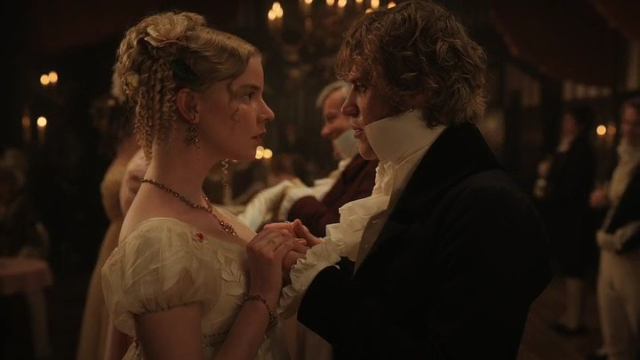Friday, August 28, 2020
Emma (2020)
The story of Jane Austen’s Emma (1815) is clearly targeted at people who spin at a lower RPM than fans of Quentin Tarantino, people who like to let inconsequential character quibbles sink in over a period of hours.
In this critic’s opinion, a film without real conflict is like a bowl of raisin bran without raisins. It’s just bran. In a way, it is refreshingly different from the norm; the film has merits. At the same time, the audience cannot be in an impatient mood when watching. Lots of ancient high-class literature, such as that of Charles Dickens, can be put into this category.
Need I contrast the bombastic explosivity of a Shakespeare play with a book of similar age? Different types of people have always lived on this planet, and with them different types of stories. Though the early 19th century was in many places an era of religious obsession and civil order, at the same time, Napoleon was tearing through much of the old world and there was plenty of spicy conflict elsewhere.

The basic premise is that Emma (played by Anya Taylor-Joy) has made a hobby of putting couples together, silver-tonguing the local aristocrats to hook up with each other, more specifically those aristocrats who she sees as a match. Though a good judge of character, she is not a good judge of romantic compatibility, as the relationships flop half of the time. Beyond that, the film is all Victorian dress and ceremony.
The trouble with a realistic costume drama is that life in the 19th century was boring. The following century had two world wars, the rise of modern entertainment, and the invention of the Internet. It wasn’t all goat farming, churches, and incomprehensible formal customs. True to the source novel, the film is set in the English countryside for another layer of posh bullshit. (A wild west or samurai setting is often more entertaining in that period.)
There is dancing, prancing, and gallivanting. The film is full of rituals, everything short of blood sacrifice. (I highly recommend 2019’s Midsommer.) In the right proper land of England, gentlemen wear top hats and tailcoats, rather than the leather ammo belts and skeleton tattoos worn in the wasteland formerly known as America.
Emma’s idea of high-octane action is a minor quibble at a picnic. Where the second act ends and the third begins, that’s a plot point. (!) Not quite blood sacrifice.
With such lavish production design, one would hope that a sequel would take better advantage of studio resources, including creative writing talents. I can envision a new take on Emma with vampire zombies and an ancient order of forbidden sorcery. The first film ended with a wedding, and the second will pick up where the first left off: lethal consummation. The groom is actually a vamp, and Emma does what needs to be done as a leotard-wearing undead-hunting sorceress.